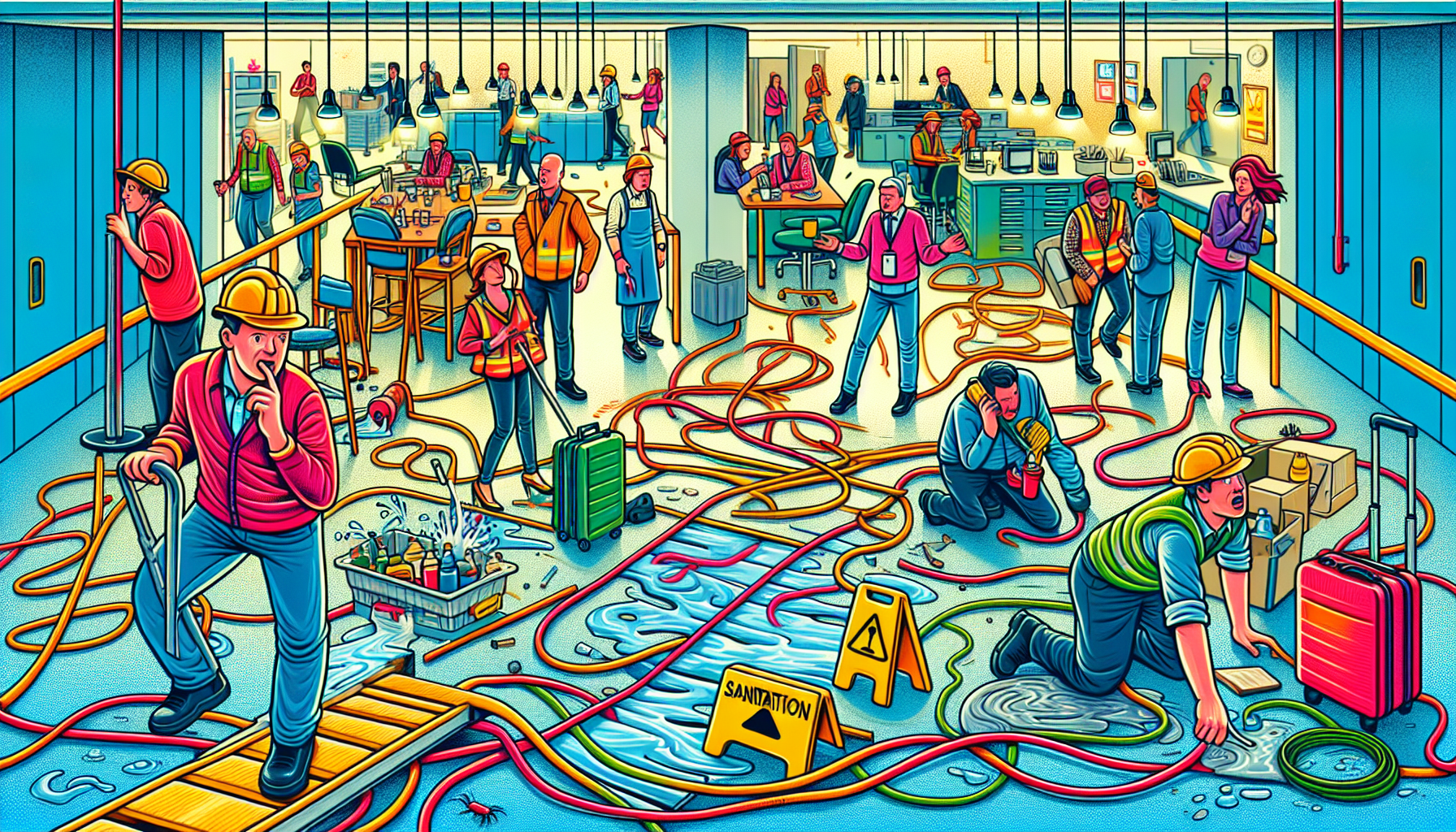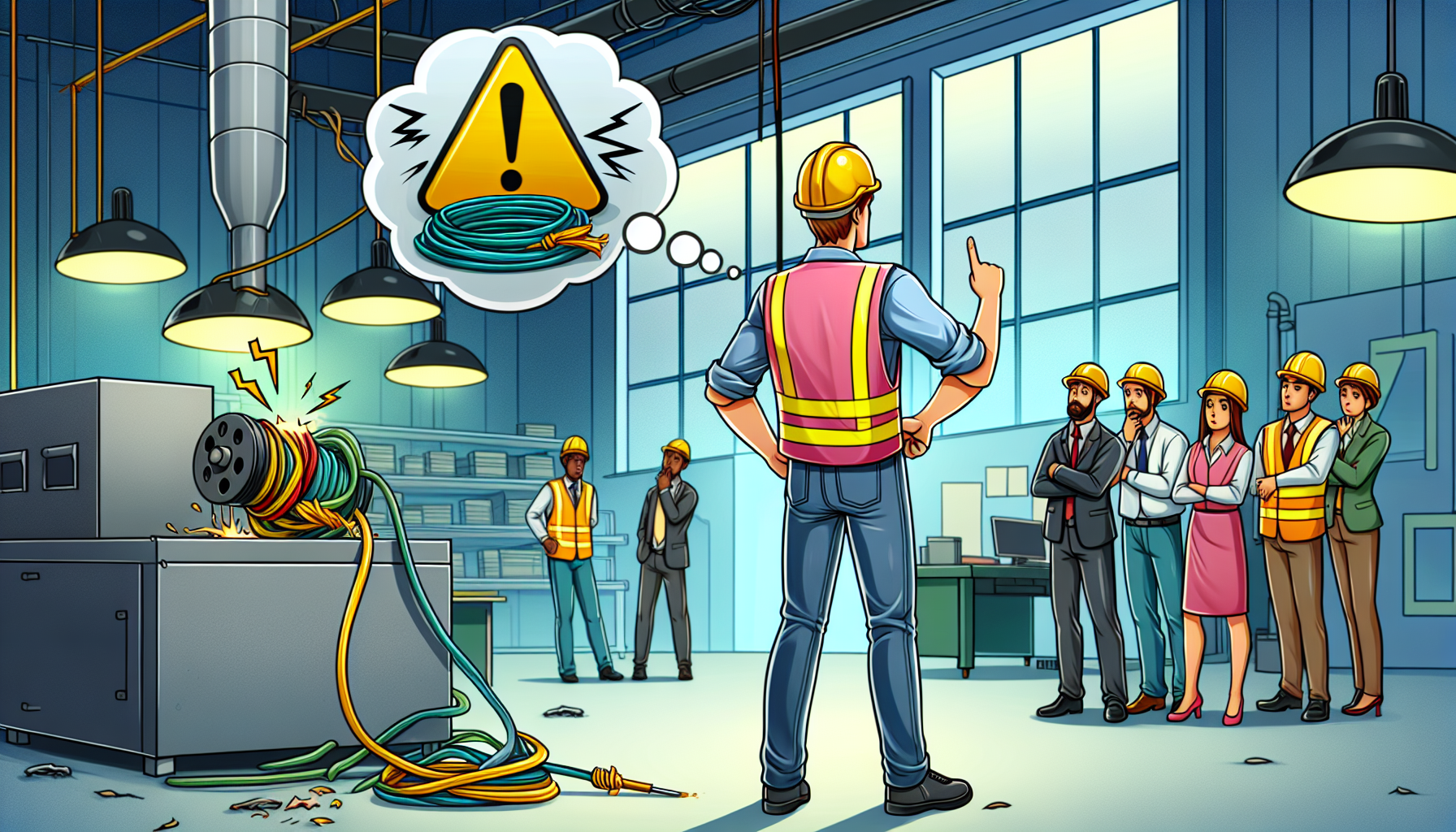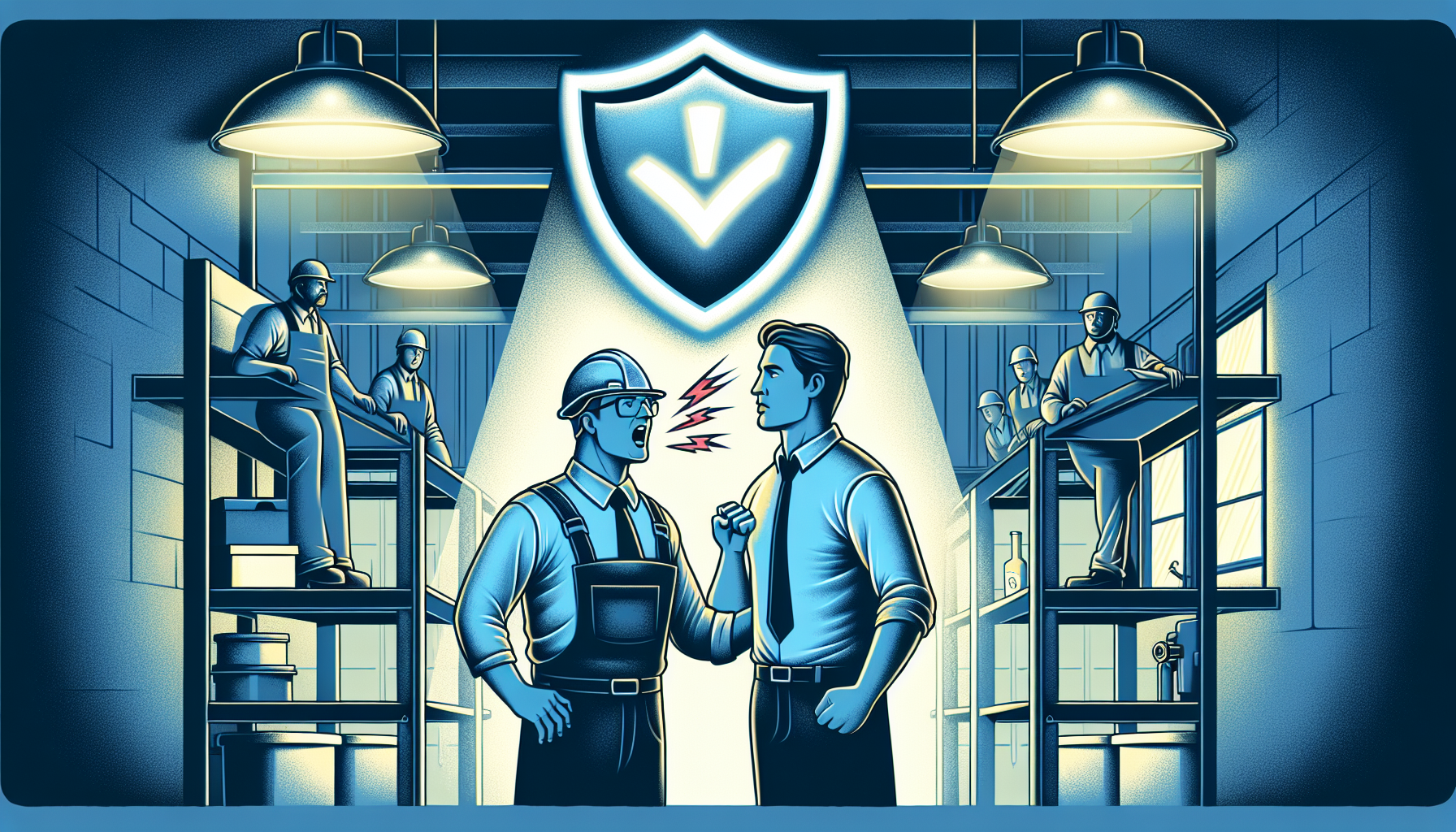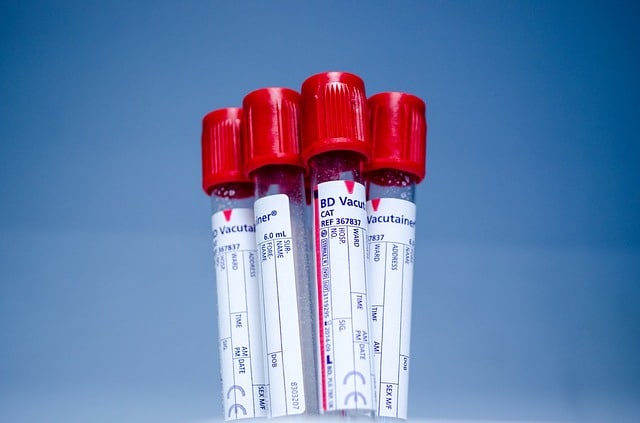In a personal injury case, proving negligence is crucial to secure compensation for your injuries. You must show how to prove negligence in a personal injury case by demonstrating that the defendant had a duty of care, breached it, directly caused your harm, and resulted in damages. Understanding these four elements—duty of care, breach, causation, and damages—is essential for building a strong case. This guide will explain each step to help you navigate your personal injury claim.
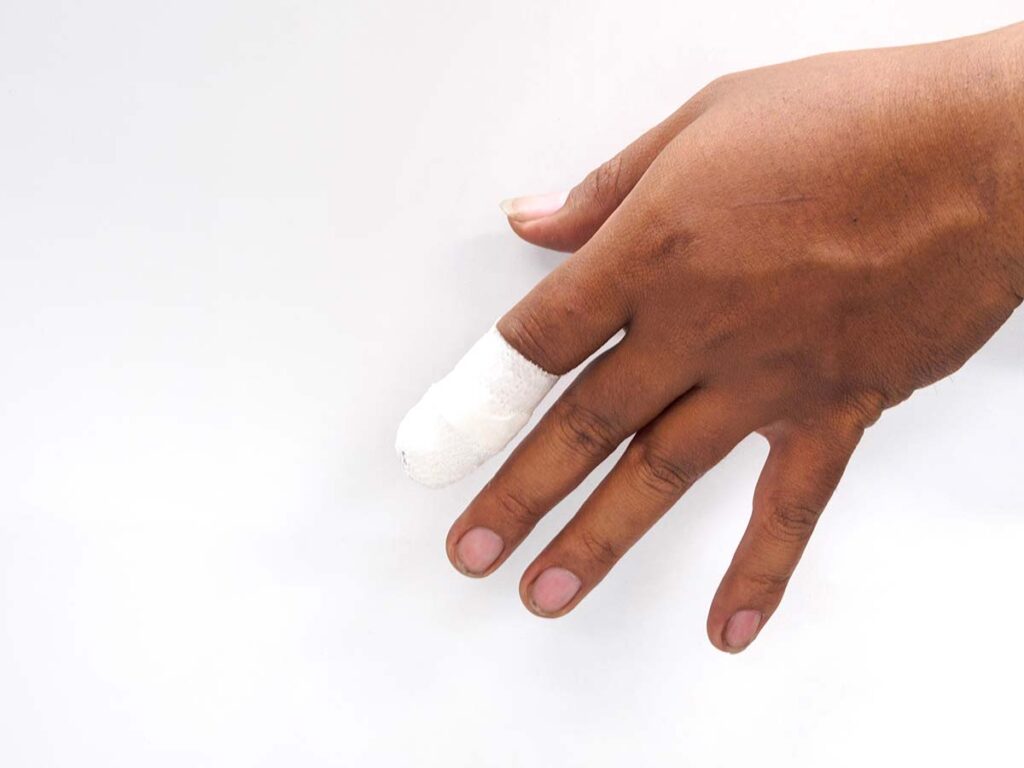
Key Takeaways
- Proving negligence in personal injury cases requires demonstrating four essential elements: duty of care, breach of duty, causation, and damages.
- Gathering comprehensive evidence, including physical evidence, witness statements, and medical records, is critical for substantiating claims of negligence.
- Seeking legal assistance from experienced personal injury lawyers can enhance the effectiveness of a negligence claim by ensuring thorough evidence gathering and successful negotiations with insurance companies.
Understanding Negligence in Personal Injury Cases
Negligence forms the bedrock of personal injury law. It encompasses actions or inactions that lead to an accident, resulting in injuries to an injured person.
At its core, negligence is the failure to exercise reasonable care, causing harm to others. This legal concept is pivotal in holding individuals or organizations accountable for the damages they cause.
Proving negligence requires establishing four components:
- Duty of care
- Breach of duty
- Causation
- Damages
Grasping these elements is vital for personal injury claims.
Personal injury cases hinge on the principle of negligence, making it a central theme in tort law. Every personal injury action, from car accidents to medical malpractice cases, revolves around this concept. Therefore, knowing how to demonstrate each component effectively can determine the outcome of a negligence lawsuit.
We will explore each of these components: duty of care, breach of duty, causation, and damages. This structured approach will provide the knowledge needed to navigate a personal injury case confidently.
Duty of Care
The duty of care is the cornerstone of any negligence claim. It refers to the legal obligation to act with a certain level of care towards others to prevent foreseeable harm. In personal injury law, this duty is owed by everyone to exercise reasonable care in their actions to avoid causing injury. The first step in proving negligence is establishing that the defendant owed the plaintiff a duty of care.
Common examples of duty of care include driving safely, maintaining property conditions, and providing competent medical care. For instance, doctors owe their patients a duty of care to provide reasonable and competent medical treatment. Similarly, drivers are expected to operate their vehicles safely to prevent accidents. Traffic laws often define these duties, serving as a basis for legal claims in auto accident cases.
Personal injury lawyers play a crucial role in establishing the duty of care owed to the plaintiff. They gather evidence, such as traffic laws and safety regulations, to demonstrate that the defendant had a legal duty to act responsibly. Recognizing this duty is crucial to building a strong negligence case.
Breach of Duty
Once the duty of care is established, the next step is to prove that the defendant breached this duty. A breach of duty occurs when the defendant fails to act as a reasonably prudent person would under similar circumstances. This failure to exercise reasonable care can be evidenced by actions that fall below the accepted standard of care.
The standard used to determine if a party acted negligently is known as the reasonable person standard. This standard assesses whether the defendant’s actions were aligned with what an average person would have done in similar circumstances. If the defendant’s conduct falls short of this standard, it constitutes a breach of duty.
In many cases, traffic violations can serve as clear evidence of a breach of duty. Disobeying traffic laws, for example, can indicate that a driver failed to exercise reasonable care, thereby breaching their duty. Establishing this breach is crucial in proving the defendant’s negligence and holding them accountable for the plaintiff’s injuries.
Establishing Causation
Causation is the critical link between the defendant’s negligent actions and the plaintiff’s injuries. It involves proving that the defendant’s breach of duty directly caused the harm suffered by the plaintiff. The concept of proximate cause is central to this element, which means that the defendant could reasonably foresee that their actions might result in injury.
To establish causation, the plaintiff must demonstrate that the injury would not have occurred but for the defendant’s negligent behavior. This requires specific evidence linking the defendant’s actions to the plaintiff’s injuries. For example, in medical malpractice cases, linking a wrong prescription to the worsening of a medical condition can help establish causation. Demonstrating this connection is essential for a successful negligence claim.
Proving Damages
Establishing that the plaintiff suffered damages is the final element in a negligence case. Damages refer to the tangible and intangible losses incurred due to the defendant’s negligence. These can include medical expenses, lost wages, and pain and suffering.
Medical documentation plays a crucial role in establishing the extent of the injuries and their connection to the negligent act. Billing statements from medical treatment help quantify economic damages. Plaintiffs must provide various types of evidence, including medical bills, receipts, and wage statements, to support their claim for damages.
Personal injury lawyers help gather and present this evidence to ensure the plaintiff receives the compensation they deserve.
Gathering Evidence for Your Negligence Claim
Collecting evidence is crucial in proving negligence. The injured party carries the burden of proof to demonstrate the defendant’s negligent actions. This process starts by reviewing the facts and circumstances leading up to the accident. Factors such as road conditions, weather, and property maintenance can all play a role in understanding how the accident occurred.
Police reports play a crucial role in identifying negligence in car accident cases. They provide essential information that can help determine fault. Obtaining a police report is essential for making a car accident claim and necessary for the claim process. Individuals can also conduct independent investigations to gather additional evidence.
We will explore the types of evidence you can collect to support your claim.
Collecting Physical Evidence
Physical evidence can significantly bolster your negligence claim. This includes items such as photos, videos, documents, and admissions. Collecting visual documentation, such as photos and videos of the accident scene, can provide compelling evidence of the circumstances surrounding the incident.
For example, photographs of a slippery floor where a slip and fall occurred or the damage to vehicles involved in a car accident can visually demonstrate the conditions that led to the injury. This evidence paints a clear picture of the events and supports the plaintiff’s account of the accident.
Obtaining Witness Statements
Witness statements are another crucial component in proving negligence. Witnesses can offer first-hand accounts that validate the injured party’s version of events. Collecting contact information from witnesses at the scene is crucial for follow-up and obtaining detailed statements later.
Effectively utilizing witness statements can significantly strengthen your negligence claim. Witnesses can provide insights into the defendant’s actions leading up to the accident, helping to establish how the accident occurred and who was at fault. This information can be invaluable when seeking monetary compensation for the victim’s suffered damages.
Using Medical Records
Medical records are indispensable in personal injury cases. They document the injuries sustained and the timeline of treatment, which is essential in substantiating claims for expenses and damages. These records provide detailed documentation linking the injuries to the negligent act.
Lawyers compile all necessary evidence, including medical records and expert testimonies, to support the case and strengthen injury claims. They present this evidence effectively in court to advocate for the plaintiff’s compensation.
Medical bills, treatment records, and expert opinions can all serve as powerful evidence in proving the extent and impact of the injuries.
The Role of Comparative Negligence
Comparative negligence is a principle that evaluates the level of fault for each party in an accident. It determines how responsibility is shared among those involved. This concept is crucial because it can impact the amount of compensation an injured party can recover. Even if the injured party is partly at fault, they may still be able to recover compensation under comparative negligence laws.
Recognizing the role of comparative negligence is crucial for anyone involved in personal injury claims. It highlights the importance of proving negligence and the need for thorough evidence gathering to establish the defendant’s degree of fault.
We will explore how shared fault and state laws on comparative negligence affect personal injury cases.
Shared Fault
In many instances, both parties involved in an accident can be found to have contributed to the event. This shared fault significantly impacts the compensation process. The compensation awarded to a plaintiff can be reduced according to their degree of responsibility in the incident.
Certain states implement a modified comparative negligence rule, allowing compensation claims as long as the injured party is less than 50% at fault. Recognizing how shared fault and contributory negligence affect compensation is crucial for anyone in a personal injury case, highlighting the importance of proving the defendant’s degree of negligence.
State Laws on Comparative Negligence
Comparative negligence laws differ across states, affecting how compensation is determined based on the fault of each party. Some states apply a pure comparative fault rule, which allows recovery of damages regardless of the injured party’s level of fault. Others use a modified rule, where recovery is limited if the plaintiff is found to be more than 50% at fault.
These laws adjust the damages a plaintiff can recover based on the percentage of fault assigned to each party involved in the incident. Recognizing these variations is crucial for personal injury claims, as they influence strategies to prove negligence and maximize compensation.
Legal Assistance in Proving Negligence
The complexity of proving negligence makes legal assistance invaluable. A personal injury lawyer can help you understand if negligence has occurred, the legal responsibility involved, and the potential compensation you may be entitled to. Consulting with an attorney is essential as laws can be nuanced and vary depending on the circumstances.
Personal injury lawyers gather necessary evidence to support negligence claims and maximize compensation for injured clients. They can assist in getting compensation for various damages, including medical bills, pain and suffering, lost wages, and a personal injury lawsuit.
We will discuss expertise in personal injury law, negotiating with insurance companies, and preparing for trial.
Expertise in Personal Injury Law
A knowledgeable personal injury lawyer is crucial for effectively navigating negligence claims and maximizing compensation. The team at Brown Chiari LLP boasts decades of experience in managing various personal injury cases. Their extensive backgrounds in handling a variety of personal injury cases enhance their credibility and ability to navigate complex cases.
This expertise allows them to build strong cases, anticipate challenges, and effectively advocate for their clients. Whether dealing with car accidents, medical malpractice, or wrongful death cases, having experienced attorneys on your side can make all the difference.
Negotiating with Insurance Companies
Negotiating with insurance companies can be a daunting task for accident victims. Insurance adjusters are trained to minimize payouts, often employing tactics that can undervalue your claim. This is where a personal injury lawyer steps in. They handle negotiations, ensuring that you receive a fair settlement for your injuries and losses.
By countering insurance company tactics, attorneys can secure settlements that accurately reflect your medical bills, lost wages, and other related expenses. Their experience in dealing with insurance adjusters ensures that your interests are protected throughout the negotiation process.
Preparing for Trial
If negotiations with insurance companies fail to result in a fair settlement, preparing for trial becomes essential. A lawyer plays a crucial role in this preparation, ensuring that all evidence is properly gathered and organized for presentation in court. They gather various forms of evidence, including documents, photographs, and expert testimony, to support your case.
Additionally, lawyers can issue subpoenas to compel reluctant witnesses to testify. The culmination of thorough evidence gathering and compelling witness testimonies enhances the ability to present a strong argument during the trial. Their expertise ensures your case is presented effectively, maximizing the chances of a favorable outcome.
Brown Chiari LLP: Your Partner in Personal Injury Claims
Brown Chiari LLP stands as a reliable partner in personal injury claims. With a client-centered approach, they focus on thorough investigation and advocacy, ensuring that injury victims receive the justice they deserve. The firm emphasizes recovery over profits, providing personalized attention to each case.
We will highlight the benefits of working with Brown Chiari LLP, including their free consultation and no upfront fees, decades of experience, and significant verdicts and settlements. These elements demonstrate their commitment to supporting clients through every step of the legal process.
Free Consultation and No Upfront Fees
Brown Chiari LLP operates on a contingency fee basis, meaning clients only pay if they receive compensation for their claims. This payment model alleviates financial stress during recovery, ensuring that clients can focus on healing without worrying about legal costs.
Clients start with a free consultation and only pay a percentage of their compensation when awarded, ensuring no upfront costs. This approach makes legal assistance accessible to those who need it most, providing peace of mind and support from the very beginning.
Decades of Experience
With decades of experience in handling a wide range of personal injury claims, Brown Chiari LLP demonstrates their expertise and effectiveness in the field. Their team is equipped with the knowledge and resources necessary to manage complex personal injury cases.
Teamwork is a cornerstone of their approach, allowing attorneys to combine their skills and experience to achieve the best possible outcomes for clients. This proven track record of significant verdicts and settlements showcases their effectiveness as advocates for injury victims.
Significant Verdicts and Settlements
Brown Chiari LLP has a track record of securing substantial settlements and verdicts, exemplifying their effectiveness in personal injury litigation. Their success in high-stakes litigation, including multi-million dollar settlements, demonstrates their ability to achieve maximum compensation for their clients.
These significant outcomes reflect their dedication to justice and their commitment to holding negligent parties accountable. By securing substantial settlements, they ensure that clients receive the compensation they deserve for their injuries and losses.
Summary
Understanding the steps to prove negligence in a personal injury case is essential for securing the compensation you deserve. From establishing the duty of care to proving damages, each element plays a critical role in building a strong negligence claim. Gathering evidence, understanding comparative negligence, and seeking legal assistance are all vital components of this process.
Brown Chiari LLP stands ready to support you through every step of your personal injury claim. Their expertise, client-centered approach, and proven track record make them an invaluable partner in your pursuit of justice. Contact them today to begin your journey toward recovery and compensation.
Frequently Asked Questions
What is the payment structure for clients at Brown Chiari LLP?
At Brown Chiari LLP, clients benefit from a payment structure that begins with a free consultation, followed by a payment of a percentage of their compensation only if their claim is successful; should the claim fail, no payment is required.
What significant verdict did Brown Chiari LLP achieve?
Brown Chiari LLP achieved a historic $100 million civil rights death verdict, the largest in U.S. history, for the estate of a man who died as a result of actions taken by the County of Erie and five sheriff deputies. This outcome underscores the firm’s commitment to justice in civil rights cases.
How does Brown Chiari LLP support clients after a major accident?
Brown Chiari LLP supports clients after a major accident by offering legal assistance to help secure compensation for injuries resulting from negligence or intentional harm. This ensures clients receive the support they need during a challenging time.
What is the experience level of the team at Brown Chiari LLP?
The team at Brown Chiari LLP possesses decades of experience and has successfully managed hundreds of trial cases.
What role does a personal injury attorney play in determining the value of a claim?
A personal injury attorney plays a crucial role in assessing the value of a claim by accurately calculating potential compensation and ensuring the client receives what they are entitled to. Their expertise guides clients through the complexities of personal injury claims for fair financial restitution.
